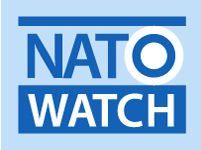By Nigel Chamberlain, NATO Watch
The US Army has recently pulled a further 12,000 soldiers out of Europe, leaving two brigade combat teams and some logistics assets to work with NATO. As the Pentagon focuses more resources in the Pacific, it still wants to maintain a presence in the Middle East and develop a new strategy for managing European ground forces.
The Pentagon recently approved a plan for a brigade-sized combat unit to be part of the NATO Response Force, but based in the United States, according to Chief of Staff General Ray Odierno. He explained his vision of the Army retaining an ability to rapidly deploy forces anywhere in the world to an Atlantic Council gathering recently.
The Army is also now using the large military bases at Grafenwöhr and Hohenfels in Germany as a Joint Multinational Training Centre for NATO Allies and other European partners, Odierno said, adding:
I can bring forces from the United States … over there to train with them. So although we have less people stationed forward, I like this set better because I think it is going to enable us to do more with our partners in a lot of different places.
Odierno told his audience that: "This is the most uncertain time in my 37 years of service”, and that social media have enabled non-state actors to shape attitudes and collective actions of people across borders. He also drew attention to the unresolved budget issues at home that bode ill for Army modernisation, training and manpower; issues which are also affecting Allies in Europe and Asia. However, he is encouraged by the commitment of NATO to use its forces outside the treaty area.
In a recent Heritage Foundation article, Luke Coffee explained how the 2013 National Defense Authorization Act (NDAA) included an amendment that called for the removal of all four US Army Brigade Combat Teams currently based in Europe. The sponsors of the amendment argued that the US should not be subsidising the defence of its European partners at a time when many European nations are cutting their own defence budgets.
Speaking at the Munich Security Conference in February this year, NATO Secretary General Rasmussen outlined a near global ‘Arc of Crises’ which “we must stand ready to deter, and defend against, any threat”. He suggested that: “NATO Response Force should become the engine of our future readiness”.
